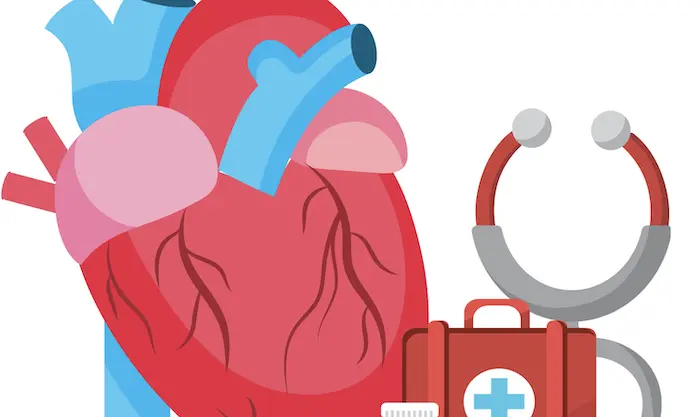Acute Myocardial Infarction (AMI), commonly known as a heart attack, is a critical cardiovascular emergency characterized by myocardial necrosis due to an acute obstruction of coronary blood flow. It remains a leading cause of morbidity and mortality worldwide, necessitating prompt recognition and management to improve outcomes. This article provides a detailed professional overview of AMI, including its causes, clinical presentation, diagnostic approach, and treatment strategies.
What Is Acute Myocardial Infarction?
Acute Myocardial Infarction occurs when blood supply to a part of the heart muscle (myocardium) is abruptly reduced or stopped, leading to ischemia and subsequent myocardial cell death. The most common cause is the rupture or erosion of an atherosclerotic plaque in a coronary artery, which triggers thrombus formation and vessel occlusion.
AMI is classified primarily into two types based on electrocardiographic findings:
ST-segment Elevation Myocardial Infarction (STEMI): Complete coronary artery occlusion causing transmural infarction.
Non-ST-segment Elevation Myocardial Infarction (NSTEMI): Partial occlusion or transient blockage leading to subendocardial infarction.
Causes of Acute Myocardial Infarction
Atherosclerosis and Plaque Rupture
The predominant cause of AMI is atherosclerosis, a chronic inflammatory disease characterized by lipid accumulation and plaque formation within coronary arteries. Vulnerable plaques with a large lipid core and thin fibrous cap are prone to rupture, exposing thrombogenic material to the bloodstream and causing platelet aggregation and thrombus formation.
Other Causes
Coronary artery spasm: Transient vasoconstriction reducing blood flow.
Coronary embolism: Emboli occluding coronary arteries.
Spontaneous coronary artery dissection (SCAD): A tear in the coronary artery wall.
Oxygen supply-demand mismatch: Conditions like severe anemia or hypotension without acute coronary occlusion.
Risk Factors
Risk factors for atherosclerosis and AMI include:
Non-modifiable: Age, male sex, family history of premature coronary artery disease.
Modifiable: Hypertension, hyperlipidemia, diabetes mellitus, smoking, obesity, sedentary lifestyle, and poor diet.
Symptoms of Acute Myocardial Infarction
Classic Symptoms
- Chest pain or discomfort: Typically described as pressure, squeezing, or aching in the substernal area, often radiating to the neck, jaw, back, or arms.
- Dyspnea: Shortness of breath due to left ventricular dysfunction.
- Diaphoresis: Profuse sweating.
- Nausea and vomiting
- Anxiety or a feeling of impending doom
Atypical Presentations
Certain populations such as women, older adults, and patients with diabetes may present with atypical or less pronounced symptoms, including:
- Fatigue
- Epigastric discomfort
- Syncope or dizziness
- Silent myocardial infarction (asymptomatic).
- Diagnostic Evaluation
- Electrocardiogram (ECG)
The initial and most critical diagnostic tool is a 12-lead ECG. It helps differentiate STEMI from NSTEMI by identifying ST-segment elevation in contiguous leads, which indicates transmural infarction.
Cardiac Biomarkers
Measurement of cardiac troponins (I or T) is essential to confirm myocardial injury. Elevated troponin levels support the diagnosis of AMI and help distinguish it from unstable angina.
Additional Investigations
Chest X-ray to rule out other causes of chest pain and assess for complications like pulmonary edema.
Blood tests including full blood count, renal function, lipid profile, and glucose.
Echocardiography to evaluate cardiac function and detect mechanical complications.
Treatment of Acute Myocardial Infarction
Initial Management
Oxygen therapy: Administered if oxygen saturation is below 94%.
Aspirin: Chewed 160-325 mg immediately to inhibit platelet aggregation.
Nitrates: For chest pain relief unless contraindicated.
Analgesia: Morphine may be used for persistent pain.
Continuous ECG monitoring and establishment of intravenous access.
Pharmacologic Therapy
Antiplatelet agents: Aspirin combined with P2Y12 inhibitors (clopidogrel, prasugrel, or ticagrelor).
Anticoagulants: Unfractionated heparin, low molecular weight heparin, or bivalirudin.
Beta-blockers: Reduce myocardial oxygen demand and improve survival.
ACE inhibitors or ARBs: For ventricular remodeling prevention.
Statins: For lipid lowering and plaque stabilization.
Reperfusion Therapy
STEMI
Primary Percutaneous Coronary Intervention (PCI): Preferred if available within 90-120 minutes of first medical contact.
Fibrinolytic Therapy: If PCI is not available timely, thrombolytic drugs should be administered within 12 hours of symptom onset, ideally within 3 hours for maximal benefit.
NSTEMI
Early invasive strategy: Angiography and PCI within 24-48 hours for stable patients.
Immediate invasive approach: For unstable patients with ongoing ischemia or hemodynamic compromise.
Fibrinolytics are not in dicated in NSTEMI.
Post-Acute Phase and Secondary Prevention
Cardiac rehabilitation: Exercise training, education, and psychosocial support.
Risk factor modification: Control hypertension, diabetes, smoking cessation, dietary changes.
Long-term medications: Continued antiplatelet therapy, beta-blockers, ACE inhibitors, and statins.
Regular follow-up: To monitor cardiac function and prevent recurrence.
Complications of Acute Myocardial Infarction
- Arrhythmias (tachyarrhythmias, bradyarrhythmias)
- Heart failure due to impaired ventricular function
- Mechanical complications such as ventricular rupture, acute mitral regurgitation
- Re-infarction
- Pericarditis (Dressler’s syndrome)
- Depression and psychological sequelae.
Conclusion
Acute Myocardial Infarction is a medical emergency requiring rapid identification and treatment. Understanding its causes, recognizing the spectrum of symptoms, and implementing evidence-based therapies including reperfusion and pharmacologic management are key to improving patient outcomes. Continuous advances in cardiovascular care and secondary prevention strategies continue to enhance survival and quality of life for patients with AMI.
Related topics:


